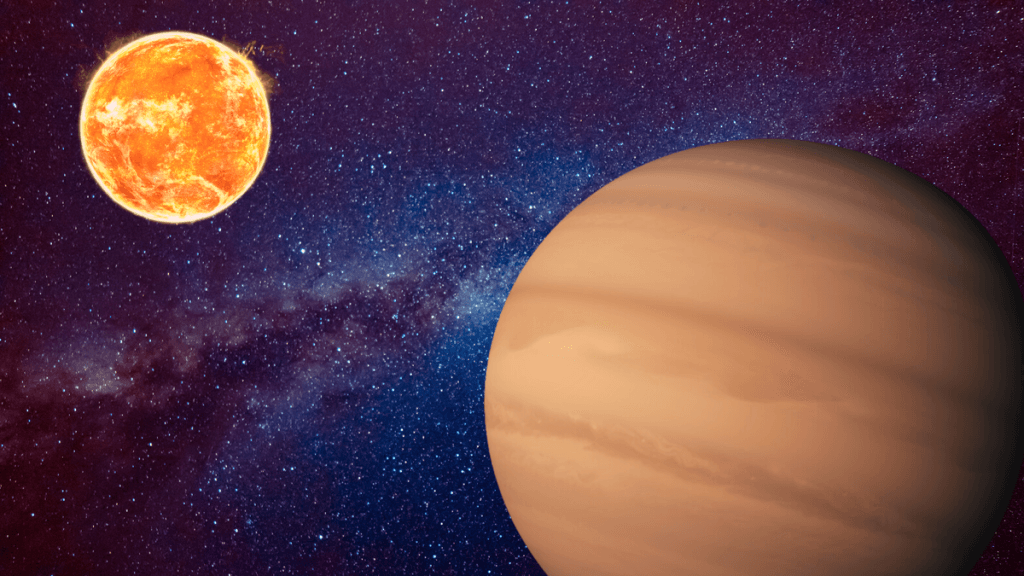
Jupiter-like exoplanets reveal our solar system may not be so unique after all (Image Credit: Space.com)
Jupiter-like planets may be a common occurrence in the interplanetary space near our solar system, especially around stars similar to our sun, a new study suggests.
If future observations confirm this hypothesis, it would mean the architecture of our solar system is not as uncommon as it is conventionally considered to be.
The environment in which our solar system formed is still an open question, but previous research has come up with two leading theories. One theory posits the system was birthed in a metal-rich environment, thanks to a nearby star that went supernova. According to the theory, the star would have returned heavy metals, produced from lighter elements combining across eons, to our young solar system. An opposing theory suggests our sun formed from a molecular cloud of gas and dust in a low-density environment instead.
Related: Friendless ‘hot Jupiter’ exoplanets may not be so lonely after all
With the latest finding that Jupiter-like gas giants are common among other sun-like stars in the nearby cosmos, the new study “is bringing new results supporting the view that the solar system formed in a quiet, low density environment,” Raffaele Gratton, a researcher at the Padua Astronomical Observatory in Italy and the lead author of the new study, told Space.com. “More extensive studies in the future may help clarify this issue.”
To arrive at their conclusions, Gratton and his colleagues analyzed data of a nearby moving group of stars known as the β Pic Moving Group (BPMG). This group, which resides roughly 130 light-years from Earth, consists of 146 stars assumed to have been born from the same molecular cloud at the same time, which means they’re expected to have a similar chemical makeup.
Around stars in this group, previous research has already spotted four Jupiter-like planets — but the new study focused on 30 stars that were about 0.8 times more massive than the sun. 20 of these stars are likely to host Jupiter-like planets in stable orbits, according to the new study.
The possibility of gas giants existing around these stars is quite surprising, as all 30 stars studied in the new research are just 20 million years old — way younger than the 100 million-year-old sun around which our own Jupiter is thought to have taken shape.
Although the BPMG group of stars is the closest such cluster to Earth, and models have suggested Jupiter-like planets may form easily around stars in this category, studying those planets is tricky. Similar to how gas giants orbit far away from our sun, Jupiter-like planets in other solar systems likely circle their stars at quite large distances too — so much so that they can take tens of years to complete only one orbit, said Gratton.
So, telescopes observing such systems must gather data across several decades in order to detect a planet crossing in front of its star, an event known as a transit. From our viewpoint, transits are detected when the star’s brightness dips briefly as the planet crosses the star from one edge to the other. This is currently the most conventional way to detect exoplanets.
The decades-long orbits of Jupiter-like planets mean existing data about transits is inadequate, as we need at least three transits for detecting a planet, said Gratton.
“Only thirty years ago, we did not know of any planet outside the solar system, so it should not be surprising that we still have difficulties in discovering some class of planets,” he added. Right now, “we are only able to detect the most massive among the Jupiter-like planets.”
For instance, earlier this year, researchers got a peek into a stunning, still-forming planetary system 5,000 light-years away from Earth whose dusty clumps could one day manifest into gas giants like Jupiter.
The new research is described in a paper published Tuesday (Oct. 16) in the journal Nature Communications.





